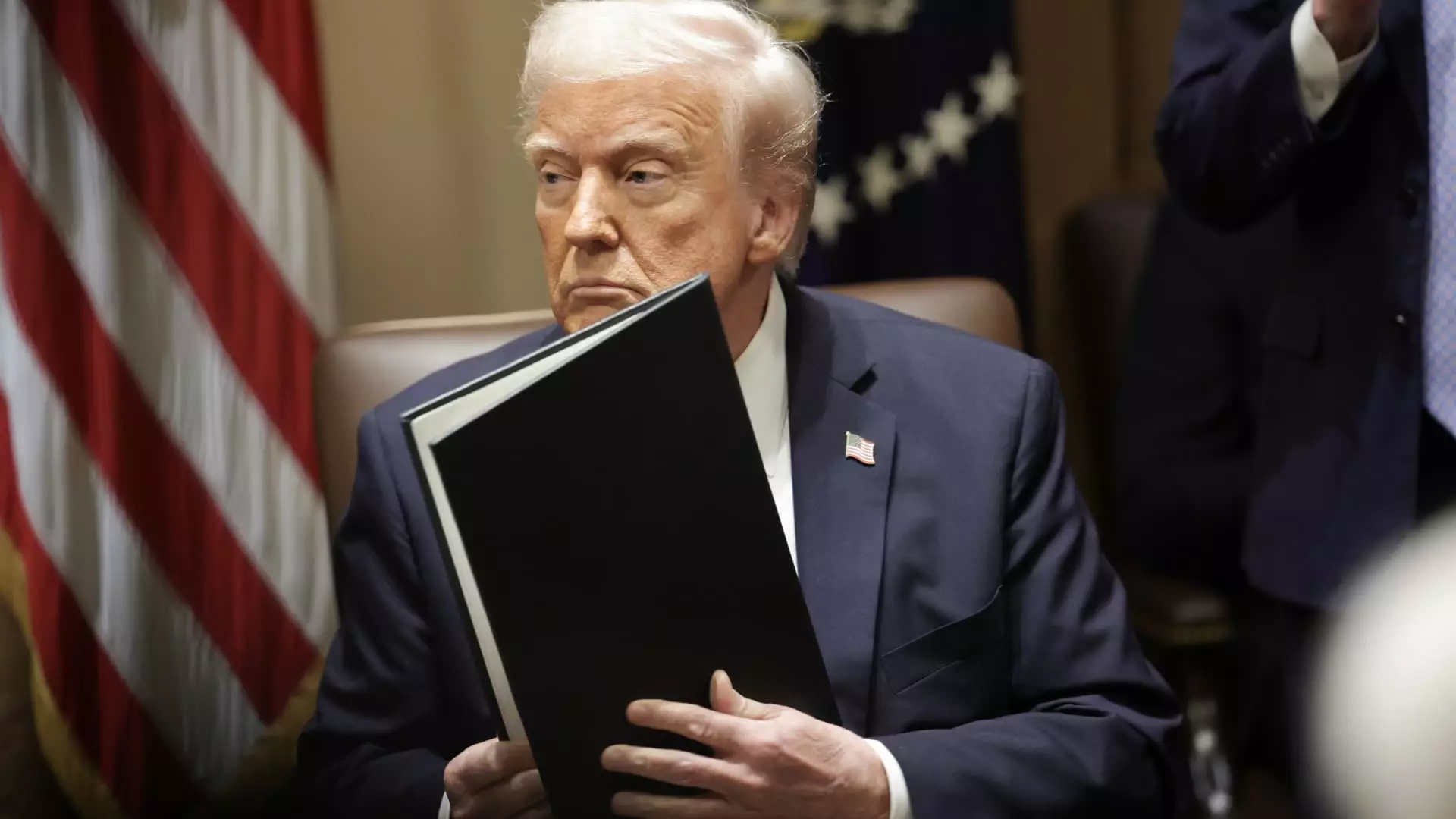President Donald Trump’s administration is gearing up to unveil new tariffs on auto imports, a move widely anticipated to set off a wave of market reactions and potential retaliatory measures from foreign partners. The White House press secretary has indicated a press conference will be held where these tariffs will be detailed, branding the forthcoming announcement as a pivotal moment that could redefine American trade dynamics. Yet, the volatility of Trump’s tariff proclamations causes unease, not just among foreign trading partners, but also within the American business community.
Trump has long described his aggressive tariff policies as a method to protect American jobs, often referring to foreign nations as exploitative adversaries. However, this mantra raises questions: Are these tariffs genuinely in the interest of American workers, or do they serve a different agenda? Despite Trump’s assertion of a forthcoming “reciprocal tariff” plan set to be enforced on April 2, the lack of clarity and consistency in his approaches makes it challenging for businesses to strategize effectively. This confusion could exacerbate uncertainty within an already anxious stock market, which has shown vulnerability to any hint of policy change from the Oval Office.
Promises Made vs. Promises Kept
The phrase “liberation day” has been touted by Trump regarding April 2, giving the impression of upheaval and transformation. However, when digging deeper, this optimism feels hollow. The talk of tariffs being “more lenient than reciprocal” signals a fundamental inconsistency. Trump’s administration seems to operate on the principle of bluster and bravado, leading to a narrative that may prioritize image over substance. Treasury Secretary Scott Bessent’s suggestion that countries could negotiate pre-emptively with the U.S. seems to add another layer of bafflement to a policy landscape already mired in unpredictability.
This chaotic approach harms not only international relations but also the domestic economy. American manufacturers are left grappling with import costs that can disrupt supply chains and raise product prices for consumers, ultimately leading to reduced purchasing power. When the President dangles the possibility of tariffs as a bargaining chip, the unintended consequence may be a chilling effect on investment—domestic and foreign alike—despite the administration’s claims that tariffs will protect American workers.
Market Response: Anxiety over Reality
Investors have responded to the anticipation of these tariffs by selling off stocks, leading to declines indicative of market anxiety. This reaction is entirely legitimate; business leaders and investors thrive on predictability and clear projections, both of which seem elusive under Trump’s erratic tariff promises. Rather than fostering a stable economic environment, his tweets and off-the-cuff remarks contribute to a sense of chaos that has ripple effects across multiple sectors.
While some may view these tariffs as a necessary measure to correct perceived trade imbalances, the lack of a coherent strategy raises serious concerns. As the trading world braces for April 2, the looming question remains: will this “big one” genuinely deliver for American interests, or merely be another instance of political theatre with detrimental long-term effects? The interplay between these tariffs and the broader economic landscape may well define not just the immediate future of trade but lay the groundwork for a turbulent political landscape that could reverberate far beyond the Oval Office.

Leave a Reply